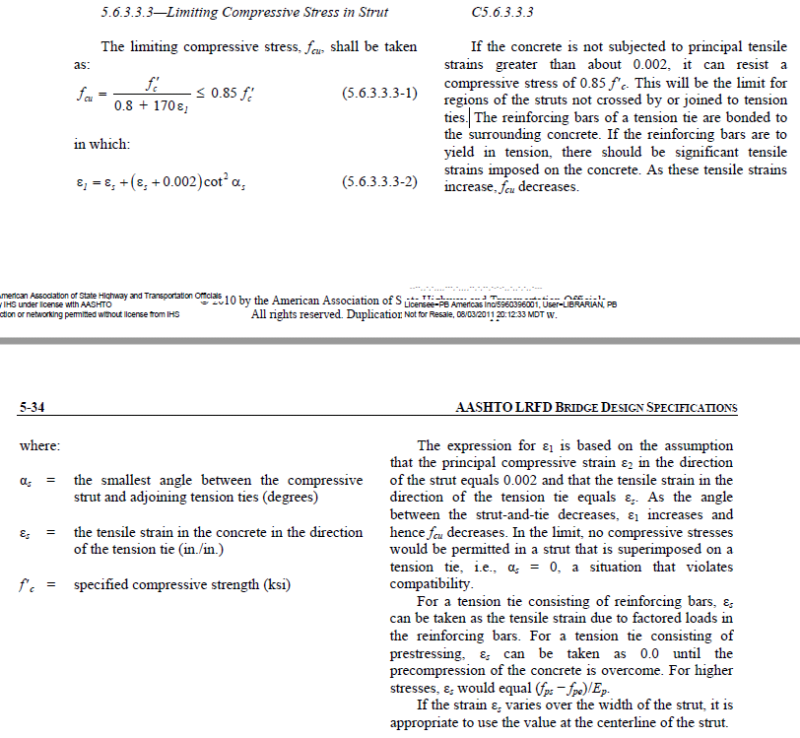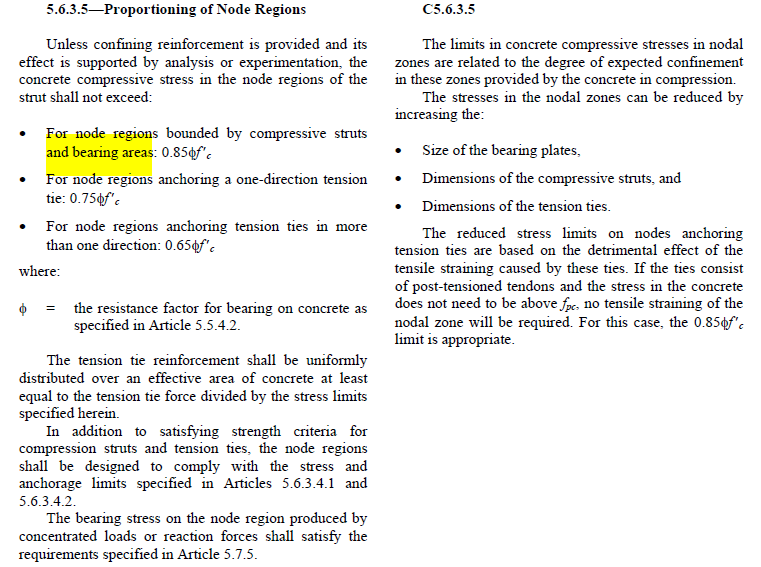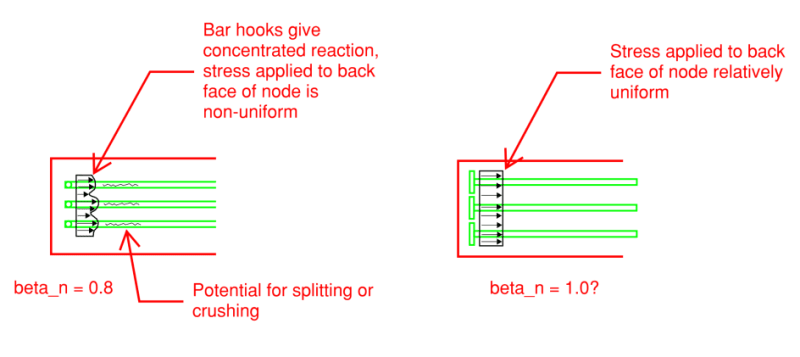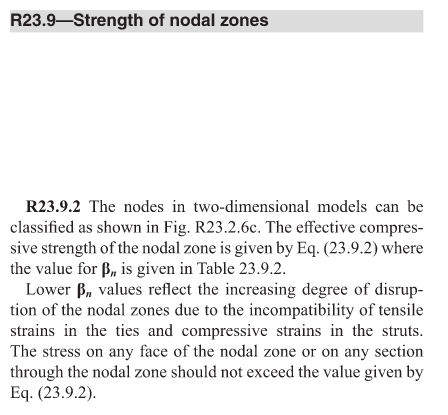Please refer to my sketch below:
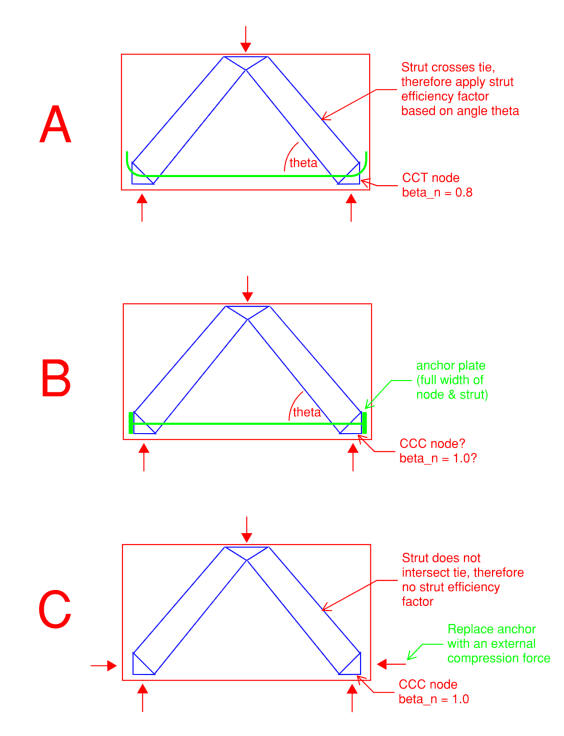
Case A is pretty straightforward. The two nodes at the supports are clearly CCT and so the node is checked with beta_n = 0.8, and the strut is checked using the strut efficiency factor based on the angle theta. Nothing controversial there.
For Case C, let's delete the reinforcement and replace it with an externally applied load, so that the node is now CCC (with beta_n = 1.0). What is then the strut efficiency factor for the diagonal strut considering it no longer crosses a tie? Is it just 1.0? The code is kind of silent on what to do in that situation.
For Case B, this is where (in my opinion) it gets even more confusing. On paper, this is a CCT node, the same as for Case A. But, in my view this is clearly closer to Case C. Assuming that the anchor plate is well proportioned, and provides a uniform stress on the back face of the node (therefore not inducing any splitting or crushing effects, etc.), then what is the difference between this case and Case C?
To my mind, the reason for using a beta_n factor of 0.8 for a CCT node is due to the non-uniformity of pressure and therefore potential for splitting or crushing on the back face of the node, which is caused by the relatively concentrated anchorage forces at the bends in the reinforcement. This is basically how beta_n is defined in the code:

Would you feel comfortable for Case B using beta_n = 1.0?
I suppose the only argument against treating this as a CCC node is due to the fact that the reinforcement carries the load passively, which is different to an external load. There must be some amount of internal strain and possible cracking to engage the reinforcement, whereas the external load is there from the beginning. But, I don't consider this to be relevant to the beta_n factor.
This now leads to the question of the strut efficiency factor for the diagonal strut for Case B. If we concede that the node itself is closer to a CCC node, would it mean that we can ignore the strut efficiency factor as we might with Case C?
I appreciate any advice in advance, thanks all!

Case A is pretty straightforward. The two nodes at the supports are clearly CCT and so the node is checked with beta_n = 0.8, and the strut is checked using the strut efficiency factor based on the angle theta. Nothing controversial there.
For Case C, let's delete the reinforcement and replace it with an externally applied load, so that the node is now CCC (with beta_n = 1.0). What is then the strut efficiency factor for the diagonal strut considering it no longer crosses a tie? Is it just 1.0? The code is kind of silent on what to do in that situation.
For Case B, this is where (in my opinion) it gets even more confusing. On paper, this is a CCT node, the same as for Case A. But, in my view this is clearly closer to Case C. Assuming that the anchor plate is well proportioned, and provides a uniform stress on the back face of the node (therefore not inducing any splitting or crushing effects, etc.), then what is the difference between this case and Case C?
To my mind, the reason for using a beta_n factor of 0.8 for a CCT node is due to the non-uniformity of pressure and therefore potential for splitting or crushing on the back face of the node, which is caused by the relatively concentrated anchorage forces at the bends in the reinforcement. This is basically how beta_n is defined in the code:

Would you feel comfortable for Case B using beta_n = 1.0?
I suppose the only argument against treating this as a CCC node is due to the fact that the reinforcement carries the load passively, which is different to an external load. There must be some amount of internal strain and possible cracking to engage the reinforcement, whereas the external load is there from the beginning. But, I don't consider this to be relevant to the beta_n factor.
This now leads to the question of the strut efficiency factor for the diagonal strut for Case B. If we concede that the node itself is closer to a CCC node, would it mean that we can ignore the strut efficiency factor as we might with Case C?
I appreciate any advice in advance, thanks all!

